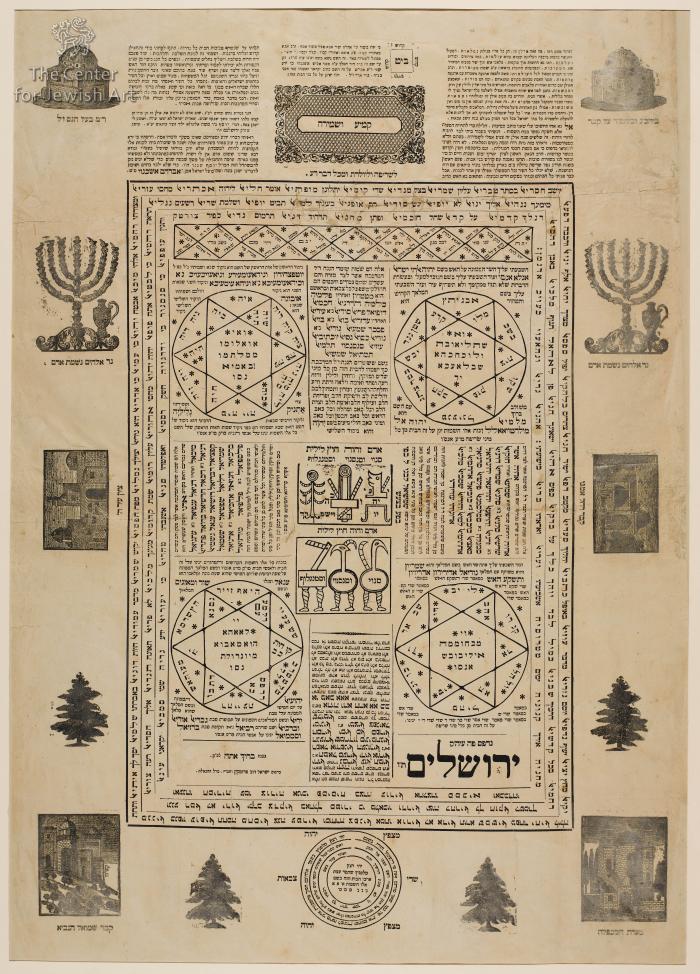
The following description was prepared by William Gross:
This huge printed amulet with decorative borders was probably the largest paper broadside ever printed in jerusalem at the time of its appearance. Images of the holy places, menorahs, and cedar trees are printed in silver ink within the wide borders. The central amulet image was also printed as a separate page at the same time, without the borders, and was later reprinted in 1914 in a slightly different version by a different printer. Many other variations have been printed since then and continue to be produced today as well. At the top of the amulet, it is stated that this talisman is effective against fire, for the protection of a pregnant woman, and guards against all bad things. The printer, Israel Frumkin, was an important printer in jerusalem for almost 30 years. This amulet is apparently among the first five items that he printed, his press having been established only in 1874. This type of print was made to be hung on the wall of a home and represents the kind of printed pieces that began to make frequent appearances on the market through the last half of the 19th century, providing the average Jewish person with the ability to have "art" on the walls of his home. The printer, Israel dov Frumkin, continued printing in jerusalem for more than thirty years, after having worked in Bak's printing house since 1870. He was bak's son-in-law.he was also the editor and printer for the newspaper "havatzelet".
Publisher: Israel Dov Frumkin, 1850 - 1914



